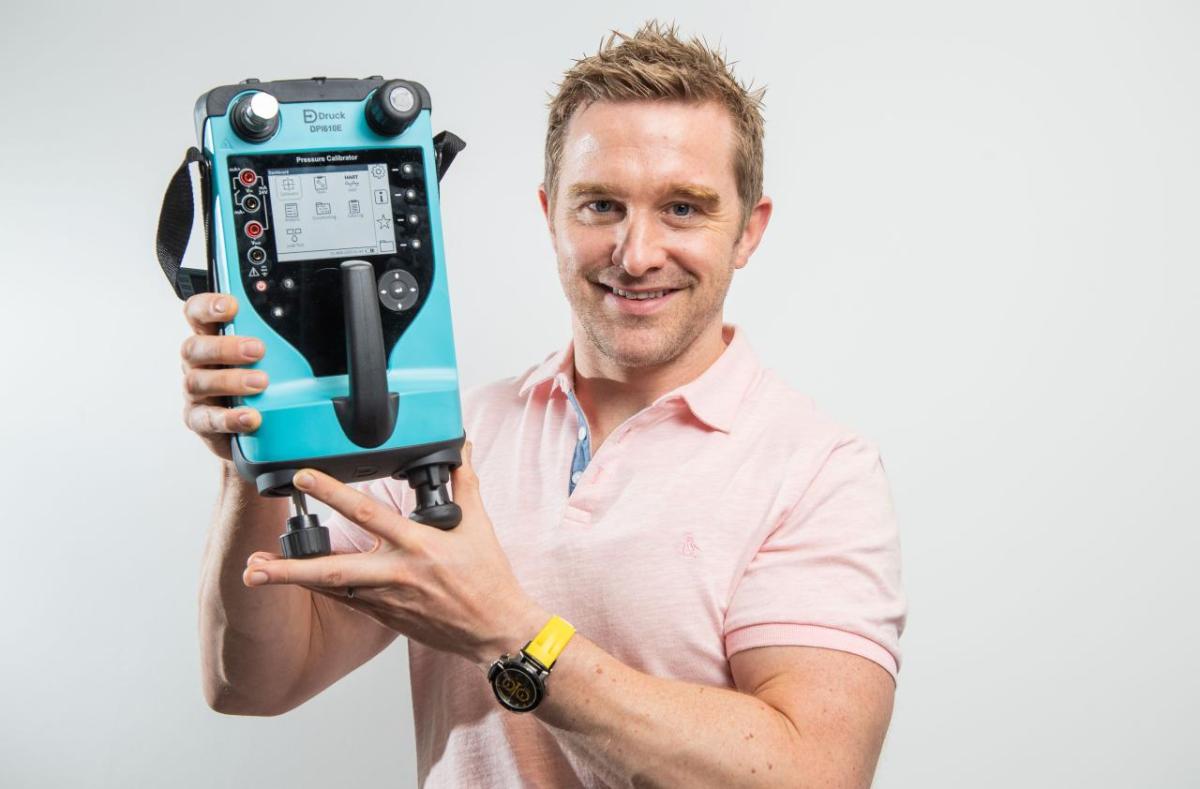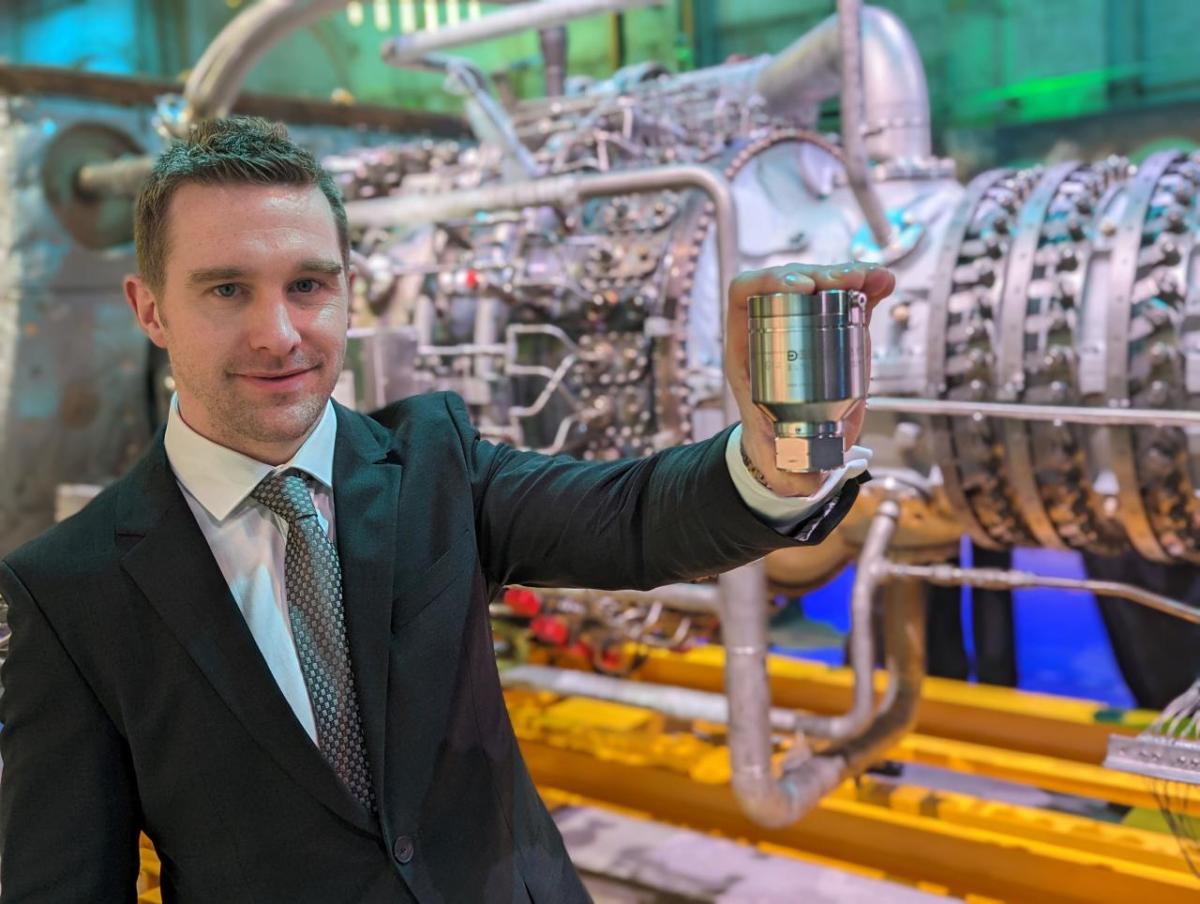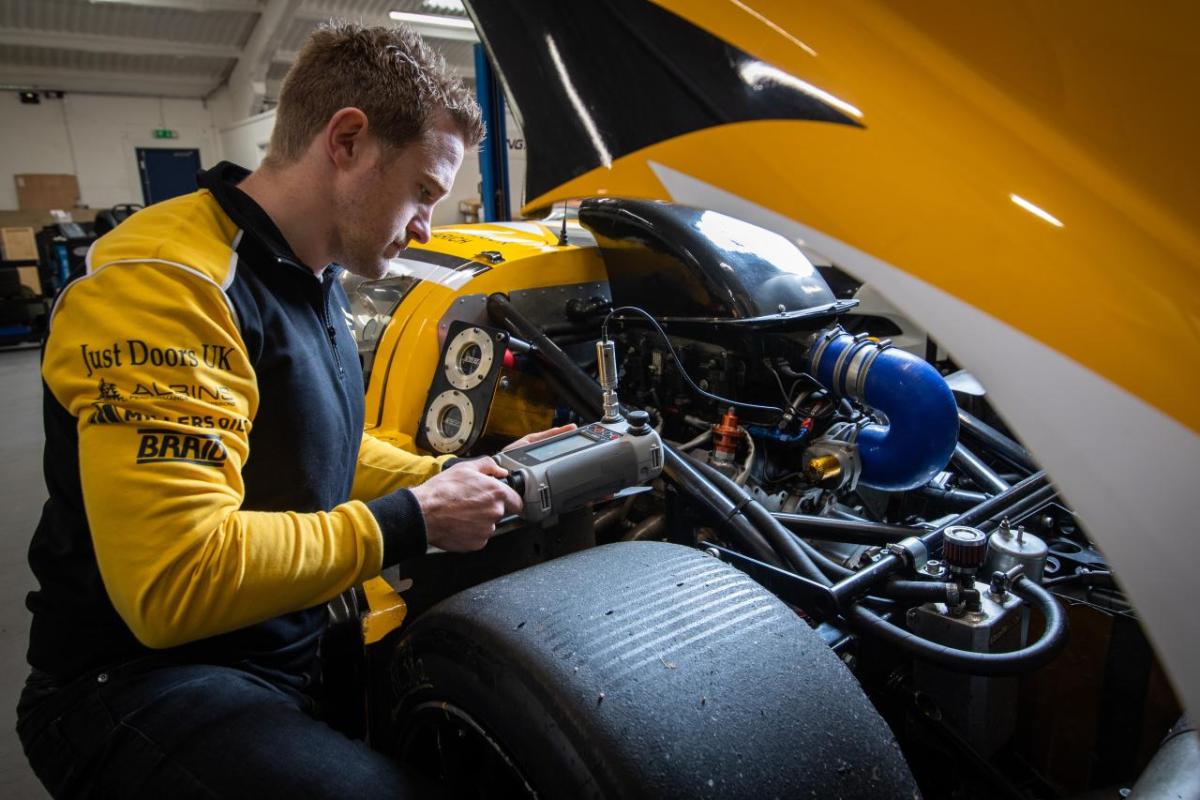The Pressure Is On: How Sensors Are Taking Energy Forward
This story first appeared on Baker Hughes’ Energy Forward Stories
Meet Jonny MacGregor. He thrives on pressure, running over 100 sensor projects and driving his race car beyond its limits.
QUESTION:
What led you to work in the area of sensor technologies?
JONNY MACGREGOR:
I am currently the Technology Leader for the Druck Precision Sensors & Instrumentation product line, part of Baker Hughes’ Industrial & Energy Technology business segment.
I started as a Lead Mechanical Engineer in the subsea department. We were designing subsea sensors to go on “Christmas Trees” (the systems of valves and fittings that regulate flow of oil and gas from wells) and as a mechanical engineer, I found the challenges of that really fascinating, given all the different loads and the relentlessness of the environment.
It all progressed from there and I’ve had the opportunity to work in a broad range of sectors from just one company - from the oilfield services space all the way through to gas, hydrogen and industrial applications such as aerospace, electrical manufacturing and meteorology.
What does a typical day at work involve for you?
JONNY:
We are at the forefront of developing precision pressure measurement technologies and instrumentation. As you can imagine, given the race to net zero, we are focused on developing new products that support the energy transition, aligned with our strategy. This takes an incredible amount of cross collaboration.
We specialize in developing technology that performs in the harshest environments, from the highest altitudes to the deepest oceans, and even in outer space, across a wide variety of sectors. Our customers rely on our products to unlock insights on asset performance to improve safety, drive efficiencies or enhance fuel economy, regardless of the temperature, terrain, climate, vibration, speed, or altitude. A critical part of my job is overseeing the teams that design brand-new products, or technologies that are modifications to existing products to suit a particular customer’s need. Currently, we've got seven major product developments on deck and over 100 projects for specific customers. That means a lot of programs, projects and…many meetings.
As a member of the leadership team for the product line, I also contribute to operations, services, finance and even marketing. You get the picture – there’s a lot of collaboration! It’s key in developing precision technology – and key in ensuring, as a business, we’re making the right decisions. I love the responsibility and I love the variety of my job.
Aerospace is an important sector for sensors; what’s happening above the cloud?
JONNY:
We entered the aerospace market 20 years ago and have been expanding our footprint ever since. We have more than 500,000 sensors in the skies today. You are unlikely to board a flight without one of our sensors controlling something: such as the undercarriage or the flaps that control where the plane’s going; the cabin air pressure; the fuel system; the oiling system for the engine; and more.
In aerospace, the product is highly tailored to the customer’s application. We try to look at what we have in the portfolio by way of standard designs to base a customized product on. We took the opportunity of a brief lull in aircraft construction during the COVID-19 pandemic, to develop a new sensor platform which can reduce the need for a high level of customization for each customer and therefore shorten time to market. It’s set to take-off at a launch event during the Paris Airshow in June this year.
In this sector, there is a huge amount of testing to verify the performance and reliability of any product because it just has to work when you're 40,000-60,000 feet above ground – there is no room for error. By upgrading the standard platform to current tested and approved products, we can make the whole process quicker and easier.
What’s different about what Baker Hughes sensors do for industry, compared to aerospace?
JONNY:
In aerospace, reliability is the number one critical requirement as it is so intrinsically linked to the safety of those on board the aircraft.
Although safety is a huge concern in all industries, another key benefit of our technology is the ability to optimize customers’ operations. Whether they are manufacturing computer chips, which relies on mass flow controllers that are pressure based, whether they’re running a turbine, or other applications in industry, our sensors provide data that help optimize their processes. This can mean improving yield, minimizing running costs, ensuring better fuel economy or lower emissions.
How are sensors and instrumentation technologies now contributing to the energy transition? What’s exciting about this space?
JONNY:
The energy transition has some big challenges ahead, not least reducing energy usage, which will make energy more affordable. To do so, everything must become more fuel efficient, which will lower the cost of running equipment.
You can't optimize any process or reduce costs and improve efficiency without data to base decisions on. To become more energy efficient, industries need data.
The two things that are measured most are pressure and temperature. You need high-fidelity sensing to register small percentage variations - if technologies record data that is not as accurate as it could be then industrial customers can’t make the most effective optimization decisions.
For example, our pressure sensor technology provides data that enables us to improve the fuel efficiency of our gas turbines, optimizing performance and ultimately helping to reduce emissions.
Why is hydrogen compatibility of sensors the new must-have?
JONNY:
Taking effective optimization decisions is especially key when working with unpredictable gases, like hydrogen.
Pressure measurement in hydrogen applications can be as simple as confirming how much hydrogen is in a storage tank, or it can be used for controlling fuel supply to gas turbines, or to conduct regular self-testing for system leaks. Across all these applications providing accurate data is essential.
However, there are two major challenges with traditional hydrogen sensors. Firstly, hydrogen can permeate or move through metal, particularly if the material is thin, so it can escape or move into the sensing element and cause problems. Secondly, it can cause embrittlement across a variety of materials – this can make sensors not designed for hydrogen environments susceptible to failure, or become less accurate
Therefore, we're developing a number of new techniques — materials, coatings and manufacturing refinements — to address these issues and make sure the performance of our technology is consistent over time.
You race cars in your spare time. How do you use sensor technologies in your motor racing?
JONNY:
The Druck product line has a long and successful track record across every level of motorsport. I wish I could say the same about me, although, I’ve enjoyed success in the British Endurance Championships.
As I mentioned earlier, our sensors are reliable in harsh environments. In motorsport we say, “to finish first, first you must finish.” Without reliable components, a car is not going to finish a race because it is such a harsh environment, and everything gets pushed hard, quite often beyond its intended limits.
At some of the racing events I compete in, the car is pushed to its limits for up to six hours continuously. For that, you need the highest reliability in any components on the vehicle.
For example, we use pressure sensors to measure the pressure of the air coming into the engine. The accuracy of that data has allowed us to look at the design of the air intake system and make small design changes, optimize it, enabling us to get more power out of the car. Test and calibration instrumentation is also essential to calibrate sensors– and assure the data is accurate.
How is motorsport changing with the energy transition? Will there always be petrol-fueled production cars in racing?
JONNY:
People say that motor racing is an environmentally unfriendly sport. There's a large carbon footprint outside of the actual race itself — in the logistics and so on. But it's also very important to appreciate that high-level motorsport, like Formula One, is pushing the boundaries of what combustion engines and technologies are capable of.
Every year, these engines are becoming more fuel efficient, and designers are getting more power out of smaller engines. Twenty years ago, a two-liter road car did 30 miles to the gallon with 150 horsepower. Now you can get that out of a one-liter engine, and it does 60 miles to the gallon. That kind of technology is filtered down from Formula One, and it is helping reduce carbon emissions from everyday driving. The sport is also looking at all kinds of cleaner fuels, such as hydrogen.
The data analytics side of motorsport is also being passed onto many different sectors. For instance, companies like McLaren are working with industry, helping them with data analytical capabilities. In Formula One, it’s obvious that the cars need to be competitive, but what ultimately gives them the edge is the strategy derived from data provided during the race. All that expertise, not only in how they gather the data, but what they do with it, and the decisions made — that huge skill set is being transferred to other industries.
What's the most exciting part of the Baker Hughes remit to take energy forward?
JONNY:
Knowing that we're designing, developing, and bringing to market cutting-edge technologies and solutions that are supporting the energy transition. Our products play a part in many applications that are improving the world: from life-saving flood defenses to weather forecasting for smart cities; from providing clean water, to making Industrial production more efficient.
I draw huge satisfaction knowing that we’re playing our small part across all those applications, and many more. It’s also humbling being part of Baker Hughes, supporting the energy transition and taking energy forward on a much bigger scale.




